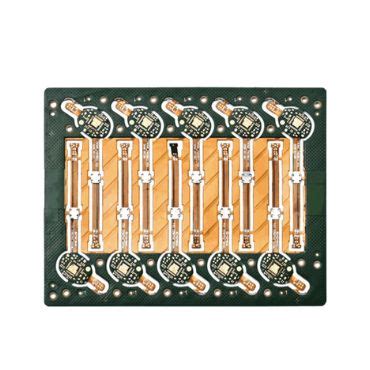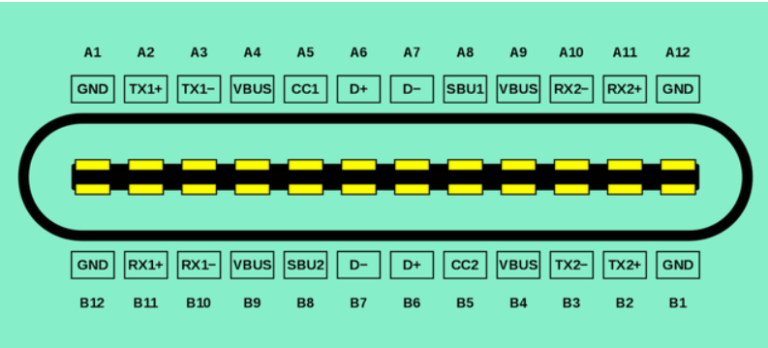Analysis of the design and transformation of PCB incinerators
1.The role of waste gas incinerators
Incinerators are a type of equipment that burns organic waste gas.
Currently, the production of copper clad boards and laminates adopts a “wet production process”, that is, the resin is first mixed with organic solvents to form a glue solution, and then the base material is glued and dried with a glue machine. A large amount of organic solvents are volatilized, and their mixture with air is called waste gas. For the production of products with phenol and formaldehyde as raw materials, the waste gas also contains a certain amount of phenol and formaldehyde. If these waste gases are discharged into the atmosphere, they will cause serious pollution to the environment. It seriously affects human health, and some of these organic waste gases also contain carcinogens. Therefore, the treatment of organic waste gas should be highly valued.
Paints also contain a large amount of solvents. During use, a large amount of organic solvents evaporate and are discharged into the atmosphere, causing environmental pollution.
If these waste gases are collected during the production process, including the solvents volatilized during the use of paint (such as automobile spraying, solvents volatilized by spraying paint of other industrial products), and sent to the waste gas incinerator for incineration, the organic solvents are oxidized and decomposed into H2O and CO2 before being discharged, there will be no pollution to the environment.
Therefore, the waste gas incinerator is an effective device to prevent the organic solvents from volatilizing into the atmosphere and causing environmental pollution during the production and use of the above products.
The condition for the complete oxidation and decomposition of organic solvents (including phenol and other benzene ring compounds) is that the oxidation temperature must reach above 760℃. Therefore, in order to ensure that the exhaust gas sent to the waste gas incinerator does not pollute the environment after the exhaust gas is burned, the combustion temperature of the waste gas incinerator must reach 760℃.
Usually, the waste gas incinerator uses diesel, heavy oil or natural gas as fuel. The waste gas sent to the incinerator burns and oxidizes in the flame of the above fuel.

The higher the temperature of the incinerator furnace, the more fuel is consumed.
In order to save fuel, some factories adopt low-temperature combustion, that is, the furnace temperature is lower than 760℃ (such as 700℃, or even below 600℃). As a result, organic solvents or other harmful components (such as phenol, formaldehyde and other organic substances, etc.) cannot be completely oxidized and decomposed. The above harmful components can be detected on the exhaust chimney of the incinerator, exceeding the national regulations. Within tens to hundreds of meters from the incinerator, the smell of the above organic substances and the falling objects can be smelled.
Therefore, to ensure that the waste gas generated during the production and use of the above products does not pollute the environment:
First, it is necessary to establish a waste gas incinerator or other organic matter recovery and treatment device, and second, the combustion temperature of the waste gas incinerator furnace must reach above 760℃.
Currently, there are still many domestic enterprises that do not have waste gas incinerators or other organic matter recovery and treatment devices. The main reason is that the cost of waste gas incinerators or other organic matter recovery and treatment devices is high; and using a waste gas incinerator to burn waste gas consumes a lot of fuel. The current price of fuel is expensive, resulting in many manufacturers allowing waste gas emissions instead of using waste gas incinerators.
Protecting the environment is the basic national policy of our country and the obligation of every enterprise.
Since organic solvents have a high calorific value and are also expensive, as long as the waste gas incinerator is designed and used reasonably, it is entirely possible to only burn waste gas without consuming a large amount of fuel, and the heat generated by the incinerator can also be returned to the gluing machine and other heat-using equipment for heating.
Using such a waste gas incinerator not only protects the environment but also saves energy. Therefore, enterprises that generate organic waste gas during the production process should use a waste gas incinerator.
The structure and function of the waste gas incinerator are as follows.

II. Design of waste gas incinerator
(I) “Direct combustion” and “heat storage” incinerator
Currently, the waste gas incinerators used in the copper clad laminate industry are mainly “direct combustion” and “heat storage”.
The so-called “direct combustion” means that only waste gas is burned and heat is not recovered. However, most of the waste gas incinerators used in the copper clad laminate industry recover heat.
In fact, the principles of “direct combustion” and “heat storage” are the same, and the only difference is whether there is heat storage material in the furnace.
The structure of “direct combustion” and “heat storage” waste gas incinerators is shown in the figure below:
- “Direct combustion” (see Figure 1)
Click to browse the next page
- “Heat storage”
A. Combustion and heat storage split type: (see Figure 2)
Click to browse the next page
B. Combustion and heat storage integrated type: (see Figure 3)
Click to browse the next page
- Description of the functions of each part of the waste gas incinerator:
The waste gas incinerator consists of a combustion chamber, a waste gas preheating zone, a heat recovery heat exchanger, and a smoke exhaust chimney.
(1) Function of the combustion chamber: Through the flame of the burner, the waste gas containing organic matter is oxidized and decomposed into H2O and CO2 that are harmless to the environment.
(2) Function of the waste gas preheating zone: Preheat the waste gas before entering the combustion chamber to improve the efficiency of waste gas oxidation and decomposition. In order to improve the preheating effect, some incinerators are designed with two exhaust gas heat exchangers, the temperature of the first heat exchanger is lower than the second heat exchanger, so as to more accurately control the exhaust gas preheating temperature. When the exhaust gas preheating temperature is relatively high, the exhaust gas can enter the combustion chamber after passing through the first heat exchanger.

The biggest difference between the “regenerative” exhaust gas incinerator and the “direct-fired” exhaust gas incinerator is:
The exhaust gas preheating of the “direct-fired” exhaust gas incinerator is completed by the heat exchanger.
The exhaust gas preheating of the “regenerative” exhaust gas incinerator is completed by heat storage materials (mostly “honeycomb ceramics”), and the exhaust gas preheating temperature can be made relatively high.
(3) The function of the heat recovery heat exchanger: It recovers the heat generated by the incineration and returns it to the heat-using device (such as the gluing machine or other heat-using devices).
Common heat media are air and heat transfer oil. Fresh air (or oil) is sent to the heat exchanger of the incinerator through a fan (or pump). After the air (or oil) is heated to a certain temperature, it is sent to the heat-using equipment. In order to effectively control the temperature of the hot air, a bypass pipeline (connected to the fresh air pipeline) is usually added to the hot air pipeline. When the temperature of the hot air sent out is too high, the bypass pipeline will automatically open and add fresh air to adjust the hot air temperature.
When oil is used as the medium, the hot oil flows back to the heat exchanger of the incinerator after passing through the heat-using device, so that the oil temperature is maintained within the temperature range required by the process. In order to make the temperature of the hot oil controllable, the heat generated by the combustion chamber is divided into two paths, one directly flows to the heat exchanger, and the other is a bypass channel. When the hot oil temperature exceeds the set value, the excess heat is discharged into the chimney from the bypass channel.
For the gluing machine, the heat generated by the incinerator is recovered through the heat exchanger and returned to the gluing machine for heating. The heating medium is the above-mentioned hot air or hot oil. For the paint industry, usually only the exhaust gas is burned, and heat recovery is rarely performed.
When designing a waste gas incinerator, the most important thing is to accurately calculate the amount of waste gas generated during the production process and the waste gas treatment capacity of the incinerator. It involves the safety of the production process and the working efficiency of the incinerator.
There have been many explosion accidents of gluing machines and incinerators both at home and abroad.
This is because when the content of organic solvents in the waste gas reaches a certain limit, an explosion may occur. In order to prevent the above situation from happening, my country stipulates that the concentration of waste gas in the production process cannot exceed 25% of the lower explosion limit allowed by the substance. For this reason, gluing machines and other production sites that produce waste gas containing organic solvents should be equipped with “waste gas concentration detection and alarm”. And it is set that when the waste gas concentration reaches 25% of the lower explosion limit, in addition to sounding an alarm, the production process will automatically stop, and waste gas will no longer be generated, while the exhaust gas fan should continue to operate to exhaust the waste gas in time to prevent the occurrence of explosion accidents.
The treatment capacity of the incinerator must match the amount of waste gas generated during the production process, because if the excessive waste gas is not burned in time in the incinerator, an explosion accident will also occur. If the incinerator is designed too large, resulting in insufficient exhaust gas, fuel consumption will increase.
The exhaust gas treatment capacity of the incinerator is related to the furnace volume of the incinerator, the structure of the furnace, the type and capacity of the burner, the structure of the exhaust gas preheating zone, the capacity of the exhaust gas fan (wind speed, air volume, pipe diameter), and the capacity of the smoke exhaust fan (wind speed, air volume, pipe diameter and tail gas chimney diameter).
For incinerators with heat recovery requirements, it is necessary to accurately calculate the heat required by the heat-using equipment, and calculate the surface area and medium (air or hot oil flow rate) of the heat exchanger. The air flow rate and flow rate are determined by the capacity of the blower and the pipe diameter; the hot oil flow rate and flow rate are determined by the pump capacity and the oil pipe diameter.
The more commonly used fuels for incinerators are diesel, heavy oil and natural gas. When heavy oil is used as fuel, a carburetor is required to keep the heavy oil in liquid form. At the same time, a filter is required to filter out impurities in the heavy oil to prevent clogging the burner’s nozzle.
In production practice, for burners fueled by heavy oil, it is not enough to use only one filter. It is best to use two filters. The filter can be made of 80-mesh or 100-mesh stainless steel mesh.
The ignition mechanism of the burner has an electronic ignition to ignite diesel or heavy oil. For this ignition form, sometimes it will not ignite. Many manufacturers have designed a method of igniting petroleum gas first and then igniting diesel or heavy oil. This ignition device rarely fails to ignite.
The type and capacity of the burner are very important. It is best to use a burner with automatic ignition → low fire → high fire → flameout automatic conversion function.
When the incinerator is ignited in a cold furnace, a lot of heat is required, and the burner should be supplied with a large amount of oil. When the equipment is in a stable production state, the solvent in the exhaust gas will assist in combustion. At this time, the burner should be supplied with a small amount of oil (when the exhaust gas concentration is high, the exhaust gas will self-ignite and no fuel is needed). In this way, when the cold furnace is ignited, the incinerator can heat up quickly. When production enters a stable state, the burner can light a small fire or only burn exhaust gas without burning fuel oil, so as to save fuel consumption and energy.
(II) “One to one” and “one to multiple” waste gas incinerators
The so-called “one to one” and “one to multiple” waste gas incinerators refer to one incinerator for one gluing machine and one incinerator for multiple gluing machines. At present, the most in China is one incinerator for four gluing machines.
In the past, most of them used one incinerator for one gluing machine, and there was also one incinerator for two gluing machines. But with the soaring price of fuel oil, there has been a configuration of one incinerator for four gluing machines recently.
For the design of one incinerator for multiple gluing machines, its design difficulty is relatively large. Because the gluing machine does not produce the same product variety, the amount of waste gas generated will be different as the product variety changes. Therefore, the size and structure of the incinerator must be designed by strictly calculating the amount of waste gas generated by the gluing machine and the heat demand of the gluing machine. If the incinerator is designed to be small, the danger of the production process will increase. If the incinerator is designed to be large, the oil consumption of the production process will increase.
The first factor in the design of an incinerator is to determine whether to use “direct combustion” or “heat storage”. The cost of “direct combustion” is relatively low, and the cost of “heat storage” is relatively high. For the “heat storage” incinerator, the integrated type is more reasonable than the split type structure.
The second factor in the design of an incinerator is to calculate the capacity of the incinerator furnace, the waste gas preheating chamber (or heat exchanger), and the heat medium heat exchanger. If the calculation is inaccurate, it will increase the danger of the production process or increase the oil consumption of the production process.
The advantage of one incinerator for multiple gluing machines is that it can reduce the investment in equipment, but the design difficulty is much greater.
Because the products and varieties produced by the gluing machine are constantly changing, that is, the amount of waste gas generated is also constantly changing. If the amount of waste gas generated by the gluing machine is greater than the processing capacity of the incinerator, the concentration of waste gas will increase and there will be a risk of explosion. If the amount of waste gas from the gluing machine is less than the processing capacity of the incinerator, the fuel consumption of the incinerator will increase. Moreover, when multiple gluing machines are turned on at the same time, it is more fuel-efficient. However, if multiple gluing machines are not turned on at the same time, the fuel consumption will increase instead.
Therefore, it is not that one gluing machine will necessarily save fuel for multiple gluing machines. You must carefully weigh the selection and be more rigorous and meticulous in the design.
3.Energy-saving transformation of waste gas incinerators
(1)Principle and necessity of transformation
At present, most of the incinerators used in the domestic insulation material industry and copper clad laminate industry use “direct-fired” incinerators. This type of incinerator allows the waste gas to burn together with the burner flame in the furnace. Although this type of incinerator can completely oxidize and decompose the waste gas to achieve the purpose of pollution-free emission, the fuel consumption is relatively large.
The characteristic of the “regenerative” incinerator is that part of the heat generated by the combustion of fuel and exhaust gas in the furnace is stored by the heat storage body (“honeycomb ceramics”). It plays a role in preheating the exhaust gas, making the exhaust gas oxidized and burned more thoroughly when entering the furnace, and can even directly ignite the exhaust gas, so it can significantly save fuel and energy. However, the cost of the regenerative incinerator is relatively expensive, and many small and medium-sized enterprises cannot afford it.
Today, with the rising fuel prices, saving fuel and reducing costs have become issues that every enterprise attaches great importance to. In fact, as long as a heat storage body (“honeycomb ceramics”) is added to the “direct-fired” incinerator, the purpose of saving fuel and energy can be achieved.
After adding a heat storage body (“honeycomb ceramics”) to the “direct-fired” exhaust gas incinerator, it not only plays a role in heat storage, but also serves as a second fire source. Its energy-saving effect is better than that of the regenerative incinerator. For several “direct-fired” exhaust gas incinerators that I have modified, as long as the exhaust gas volume is sufficient, the entire production process only burns exhaust gas, and no oil is needed. This energy-saving effect has exceeded that of the “heat storage” waste gas incinerator.
Since the cost of converting the “direct-fired” waste gas incinerator into the “heat storage” type is very low, it is necessary to transform the “direct-fired” waste gas incinerators used in the domestic insulation material industry and the copper clad laminate industry.
4.Key points of the transformation of the “direct-fired” waste gas incinerator
(1) Add safety facilities to the incinerator and the gluing machine.
Although the gluing machine has been installed with an exhaust gas concentration detector and alarm, in order to prevent the occurrence of “unexpected” emergencies, “pressure relief” measures should be installed on the gluing machine and the incinerator when an emergency occurs to ensure that no explosion will occur under any circumstances.
(2) Measures to reduce fuel consumption of incinerators
Based on my experience in modifying many incinerators, the key points to reduce fuel consumption of incinerators are:
A. It is necessary to modify the furnace, fan and pipeline of the “direct-fired incinerator” to make the “direct-fired incinerator” also have heat storage function. It can appropriately extend the residence time of exhaust gas in the furnace. Since organic solvents have high calorific value, as long as the organic solvents can be completely burned, the fuel consumption can be greatly reduced.
B. Appropriately increase the furnace temperature, because the temperature for complete oxidation and decomposition of organic matter is higher than 760℃. Only when the organic matter is completely oxidized and decomposed can the fuel consumption be reduced, and at the same time, it can more fully ensure that the exhaust emissions can fully meet the national standards.
In the incinerators modified by the author, the surrounding residents often complained about the strong odor before the modification. After the modification, when the exhaust gas is relatively sufficient, the incineration
The furnace is completely self-ignited by exhaust gas, the burner is always in the off state, no oil needs to be added, and the exhaust gas is odorless. The environmental protection department has repeatedly sampled the exhaust gas from the exhaust chimney, and the organic content is far lower than the national standard value.
C. Selection of burner. The burner of the incinerator should have the function of high fire → flameout → automatic ignition → low fire. That is, when the furnace temperature of the incinerator reaches the set value, the burner should automatically turn off the flame and rely on the combustion of exhaust gas to maintain the furnace temperature. When the exhaust gas concentration is not enough to maintain the furnace constant at a certain high temperature value, the burner should be able to automatically ignite and maintain a low fire state to maintain the furnace temperature at the set value.
As long as the furnace of the incinerator is reasonably modified, and the parameters of the incinerator and the gluing machine (or other solvent production conditions) are set appropriately, the incinerator can be maintained in the off state for a long time (relying on the self-ignition of the solvent in the exhaust gas, or the conversion state of flameout ←→ low fire), so that the fuel consumption of the incinerator is significantly reduced.







